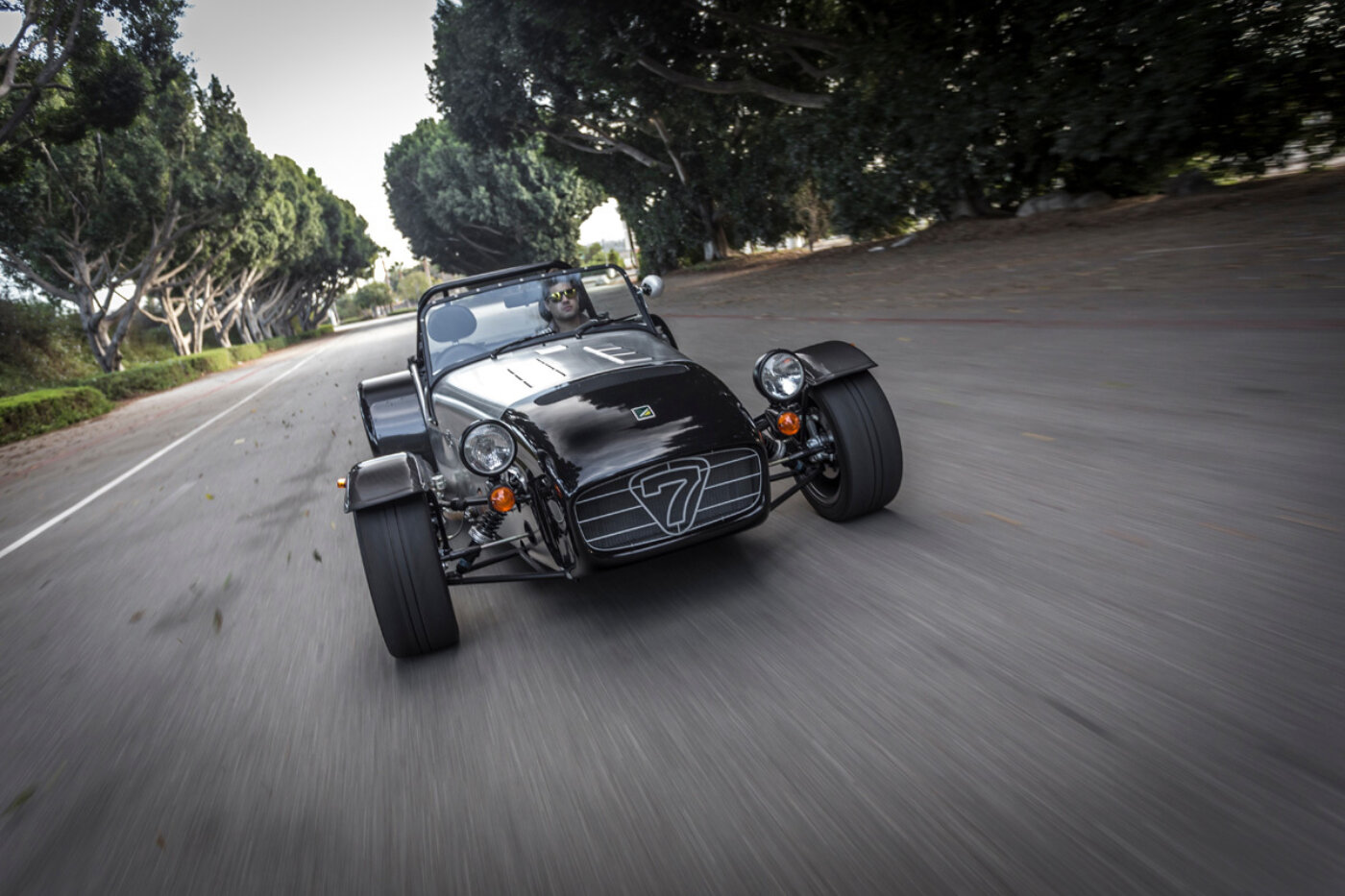
The Caterham 7 with 2.0 Duratec is a serious sports car
Text by Larry Weiner
Photos by Ted7
What’s it like for a guy who’s used to driving big, blown American muscle cars to switch to a light and agile British roadster? The short answer: it’s all good.
As the editor of Pentastar Power, I have the opportunity to manhandle all kinds of high-performance Mopars, both vintage and late model. From no-nonsense Max Wedge Super Stocks to the latest Kenne Bell supercharged Mr. Norm’s GSS Challengers, the experience of driving Detroit iron is quite a bit different than the kind of tossable, alfresco experience that awaited me with the Caterham 7, but I’m getting ahead of the story.
The Superformance facility, which has the U.S. distribution rights to Caterham, is located in a modern Socal industrial park in Irvine, California. Upon arriving, I noted several different models from the Superformance family, such as a 427 Cobra and Daytona Coupe, both dressed in Guardsman Blue with traditional Wimbledon White LeMans stripes. So the Caterham certainly keeps good company.
I was met by Nick Nehrir who gave me a tour of the facility and some background on each of the cars the company offers. And trust me when I tell you, Superformance offers some seriously cool cars. Besides the traditional small- and big-block Cobra and Cobra Daytona Coupe replicas I noted, the company also offers GT40s and the most recent addition, a repro of the 1963 Corvette Grand Sport. (All of which will covered in future issues.) I was highly impressed by this array of performance machines, and am already planning a return visit for some more wheel time. But the Caterham 7, in bare metal with sinister black carbon fiber accents, was the one that I was there to drive.
For those not familiar with its background, the Caterham 7 is a descendant of the original Lotus 7, a vehicle whose roots trace directly back to famed racer Colin Chapman, who founded Lotus Engineering in 1952. Looking for all the world like a car right out of the 1930s, the Caterham 7 is anything but an antique. Nick was quick to point out that under the prewar-looking body beats the heart and soul of a thoroughly modern sports car that’s more than capable of going toe-to-toe with many of today’s modern road rockets.
Not only that, this particular Caterham 7 is a cut above a standard model, as it was equipped with a rev-happy, 2.0 liter Ford Duratec, with custom intake, four individual throttle bodies, massaged heads, and performance pistons, plus a special computer tune. Altogether, these mods deliver 240 horsepower at a mind-bending 8500 rpm, no forced induction needed (although a 320hp Rotrax supercharged engine is available in the rhd-only 620R Caterham). Peak torque arrives at 6300 rpm, so the engine responds well to a heavy foot.
At first blush, this power output might not seem like much when compared to the 1000hp Challenger that I piloted on my way to Superformance, but by the same token, the Caterham 7 is a featherweight at less than 1200 pounds. After considering the two-tons-plus poundage of the massive Mopar, suddenly the power-to-weight ratios take on a whole new meaning. I did the math mentally and quickly realized that the Caterham 7 is one bad-to-the-bone sports car that would need to be taken very seriously.
It’s typically delivered in the same manner as Superformance’s other models: turnkey minus (the Caterham comes complete, except for installation of engine and transmission, which are included for a total price of less than $75K). An unassembled kit saves you a few thousand, but requires more more buildup time.
Much like the modern Ford Duratec engine that powers it, underneath the aluminum skin of the Caterham 7 is a virtually race-ready chassis. Strong yet lightweight components make up every part of this vehicle, and the tubular chassis that underpins it is no exception. The suspension uses fully adjustable dampers with Eibach springs, and the extremely precise rack-and-pinion steering is responsive to the slightest inputs.
A quick overview of the Caterham 7 was in order before blasting out of the garage and embarrassing some of the unsuspecting BMWs, Porsches, and Jaguars that are so common in this area of Socal. The first order of business was re-learning how to get behind the wheel. Rather than simply sliding in sideways as I normally would, Nick suggested that I climb up over the coachwork, stand on the seat cushion and slip myself in under the steering wheel. While certainly not something I’m used to doing, it did not require the flexibility of a contortionist. One simply needs to be more agile getting behind the wheel of a Caterham 7 than a contemporary car.
Once inside the Caterham 7, I found it to be surprisingly roomy and quite comfortable. The next order of business was a quick review of the switchgear. The six-speed manual transmission was simple enough, with a traditional gear shift sticking out of the floor and the shift pattern engraved on the knob. Ditto the straightforward placement of the pedals, but Nick warned me that the travel on the clutch was extremely short, in fact, only a couple inches.
Other than that, the only other thing that took a little getting used to was the turn signals. Rather than a stalk off the left side of the steering column, there are two buttons on the carbon fiber dashboard, one for the left signal, the other for the right. One push on, one push off.
There’s also a sport-mode button that opens a bypass on the exhaust, giving it a raspier sound, while altering the throttle response and engine calibrations for even more enhanced performance. The last distinctive item of note was the startup method: turn the key to the “on” position and push the starter button on the dash to awaken the little giant-killer under the hood. Altogether, the Caterham commands driver involvement and manual actuation at every level (in dramatic contrast to the driverless cars of the future), traits that truly endear us to its elemental configuration.
The engine responded instantly and settled down to a pleasant burble. Sitting on the left side of the car, the sound was not quite as loud as if it had been a right-hand-drive model with the exhaust right under my ear. Looking out over the long, louvered bare-metal hood, I slipped the clutch back in, put the short stick into first and carefully let the clutch up. Just as Nick had cautioned, it engaged almost instantly. Pressing down gently on the gas pedal, we were off and running. No, I didn’t leave any strips of sticky Avon CR500 directional rubber on the pavement, but it sure would have been very easy to do.
A quick familiarization drive around the industrial park and I was ready for to mix it up with anything on the road. After putting some miles down on surface streets, a freeway on-ramp appeared and away we went. Hitting the ramp at a 25mph roll in
Second gear, stomp the pedal to the metal and in what seemed little more than a split second it was time for Third, followed by Fourth and into Fifth.
Throttling up engine through the gears in the Caterham 7 is like riding a fire-breathing dragon that’s capable of scorching the countryside. Yee ha, we’re having fun now! Looking down at the speedo, I realized that we were well on our way to approaching triple digits and common sense dictated slowing down to at least the pace being set by the traffic in the fast lane.
After a quick jaunt up and down the freeway, Nick suggested that we pull off and install the side “doors.” This would eliminate much of the buffeting and wind in the face from our freeway blitz. It took mere moments to install the doors and we were off and running again. Sure enough, the small doors may not look like much, but they work wonders and made driving at high speed a much less windblown event.
After about an hour in the seat, it was time to head back to Superformance. I can honestly say that driving the Caterham 7 was a hoot, and I would do it again in a second. The experience is so much different than a regular car. When you’re driving a Caterham 7, it boils down to simply a man and his machine. As noted, it’s devoid of all of the distractions and the cosseted, cocoon-like cockpit environment that is so typical of production vehicles today. Trust me, you will not be texting, sipping a caramel latte or chatting on a cell phone when you’re driving a Caterham 7. Quite the opposite really, because it’s just you, the car and the road, in that order. Anything else just gets in the way.
After my time behind the wheel of the Caterham 7, I think that The Rocketeer put it best after the first time he took off with a jet pack strapped to his back —“I like it!”

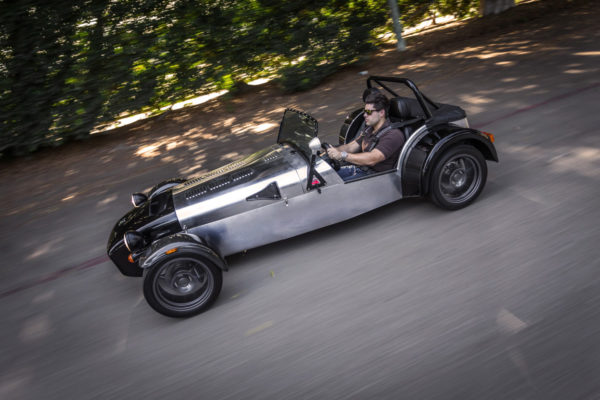
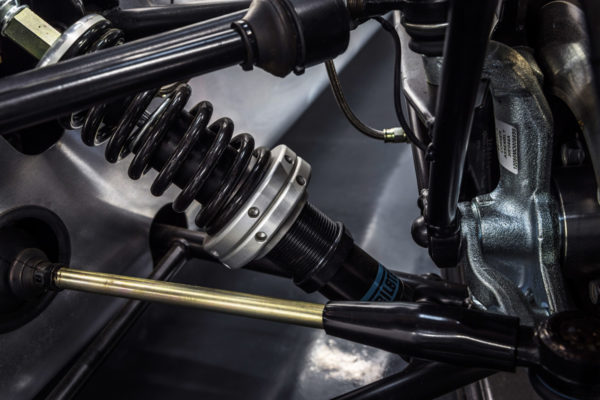
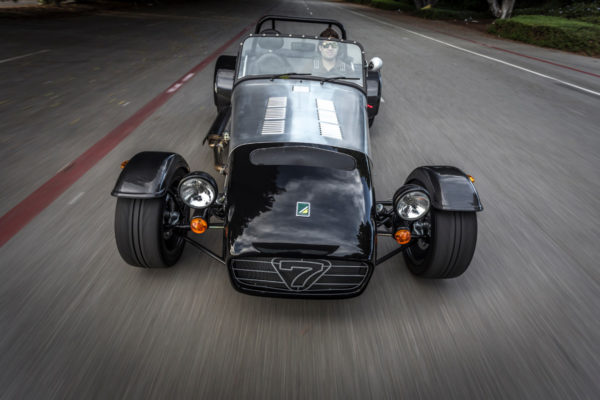
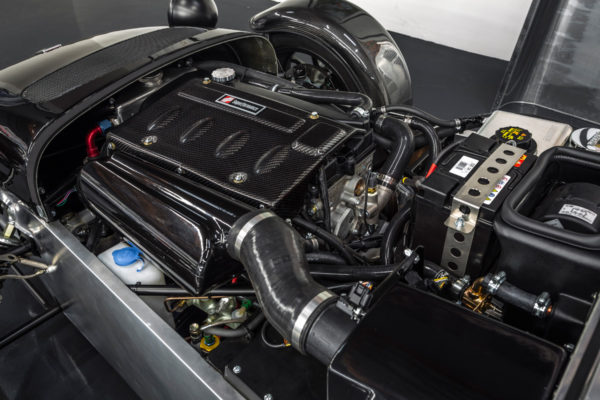
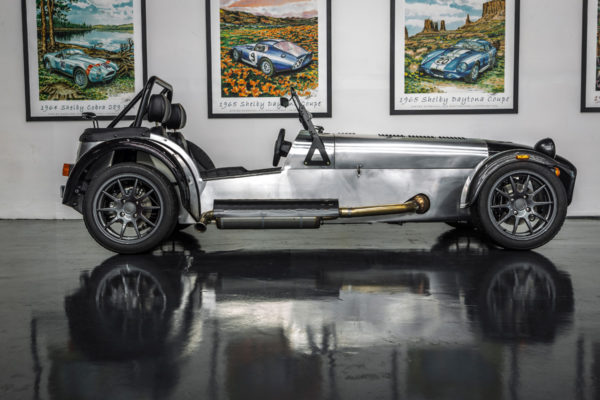
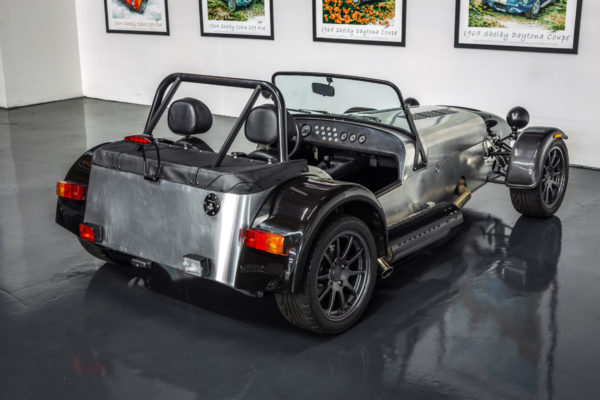
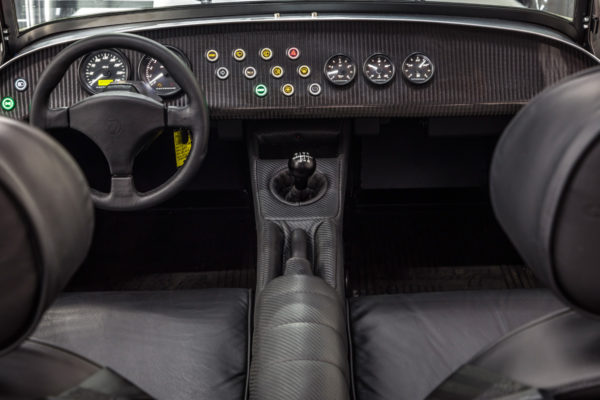
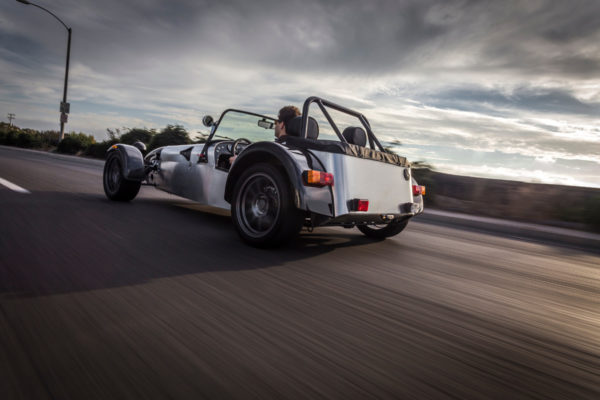
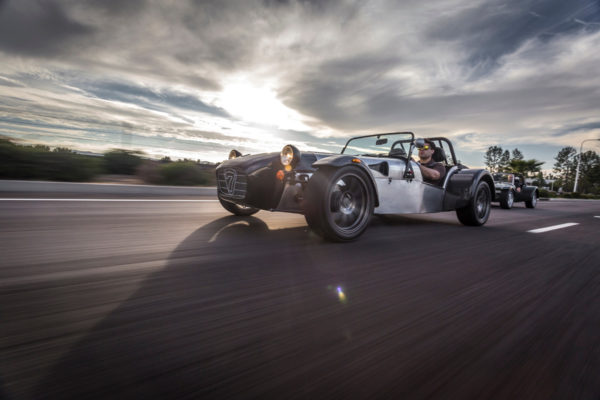
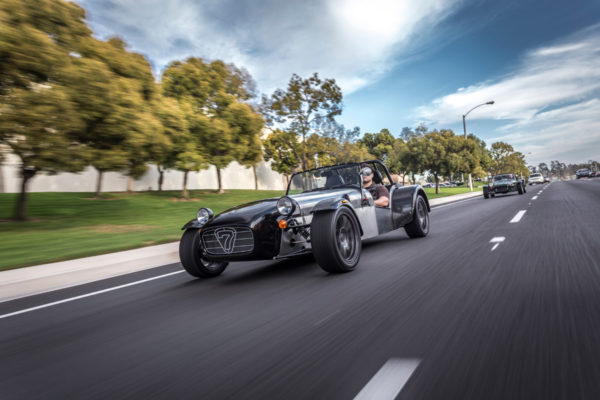
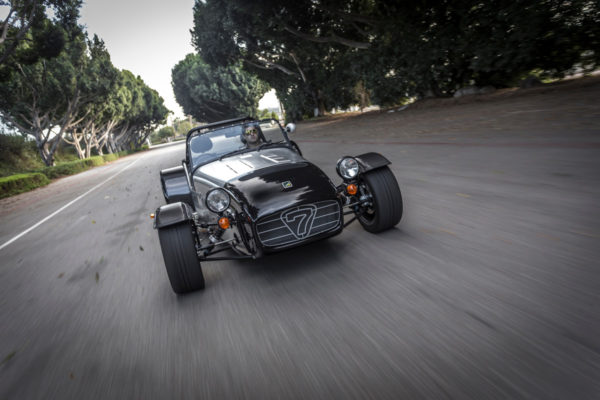
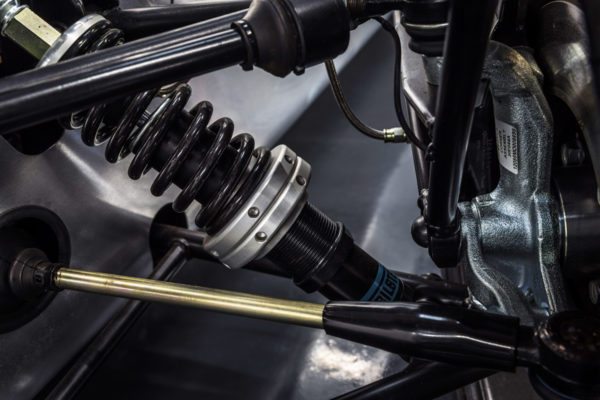
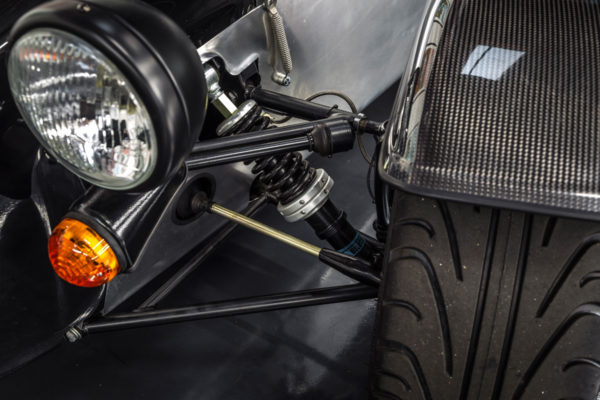
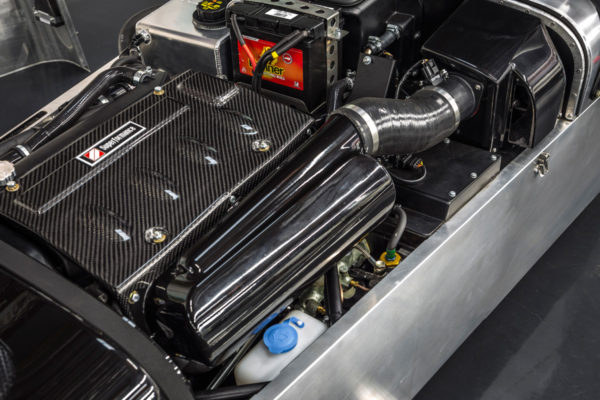
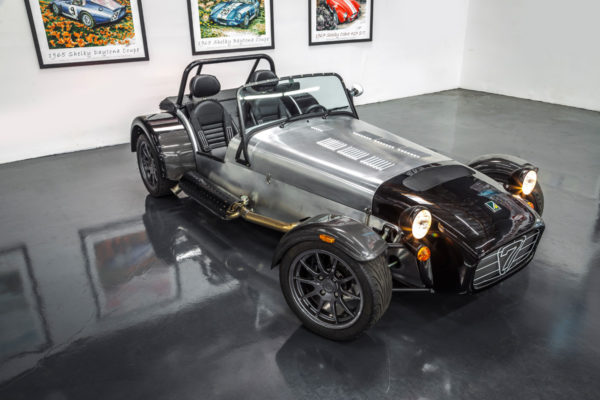
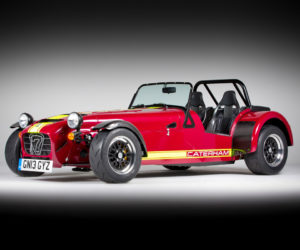
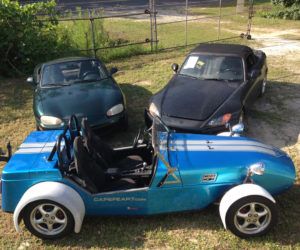
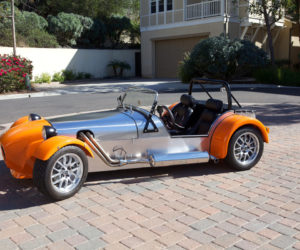
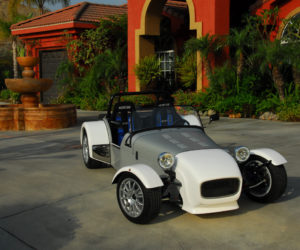
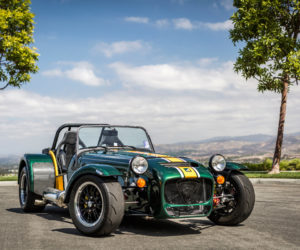
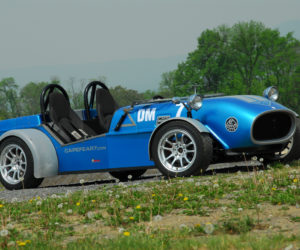




Comments for: REV ELATIONS
comments powered by Disqus